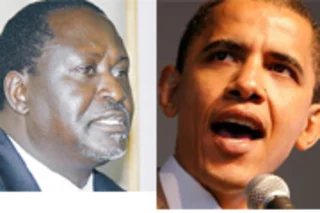One of the main facts about American life is hypodescent, "the practice of determining the lineage of a child of mixed-race ancestry by assigning the child the race of his or her more socially subordinate parent." Barack Obama & the Kenyan politician Raila Odinga (who, probably falsely, claims to be Obama's first cousin) are both "black," despite the fact that when compared to each other Obama's substantial European ancestry is rather clear. I recall years ago watching the Oprah Winfrey television show where they were discussing the issue of self-hatred with a young black woman who was attempting to become impregnated by a white man (any white man) so that her children would "look white" and be beautiful. An adoption counselor rose up and told this young woman that her agency had many biracial children who they were attempting to place, and "none of them look white, they all look ...
Fear of a white planet
Explore the complexities of mixed-race ancestry and how genetics influence skin color perceptions in identity.
More on Discover
Stay Curious
SubscribeTo The Magazine
Save up to 40% off the cover price when you subscribe to Discover magazine.
Subscribe













